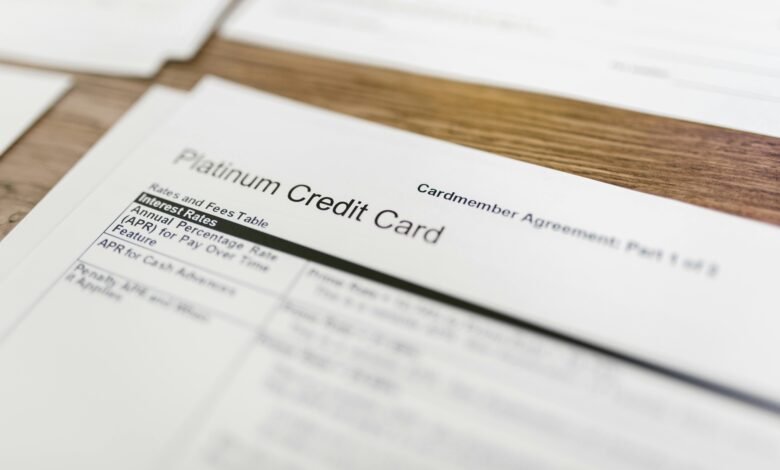Unveiled: 3 Essential Credit Card Debt Questions You Need to Ask NOW as Interest Rate Relief Waits!

Navigating Credit Card Debt: Key Questions to Consider Amidst Delayed Interest Rate Relief
Credit card debt remains a significant concern for many individuals, especially as economic conditions fluctuate. With interest rate relief on hold, it’s crucial for consumers to thoroughly assess their financial health and consider their options. The weight of credit card debt can sometimes feel overwhelming, but there are effective strategies that can help in managing it. In this blog, we will explore three essential questions that you should ask yourself concerning credit card debt during these challenging times.
1. What is the true cost of my credit card debt?
Understanding the complete financial picture of your credit card debt is paramount. Many individuals often overlook the cumulative costs associated with carrying a balance, which includes:
- Interest Rates: Credit cards typically carry high-interest rates, which can compound quickly if balances are not paid in full. Knowing your APR (Annual Percentage Rate) is the first step.
- Fees: Late payment fees, over-limit fees, and annual fees can add up significantly over time. It is essential to review your statements carefully to identify any surprise charges.
- Impact on Credit Score: High credit card debt in relation to your credit limits can negatively impact your credit score. This can lead to higher loan costs in the future, limiting your financial mobility.
Once you determine the total cost, you can create a plan to manage or reduce this debt. For instance, consider making more than the minimum payments each month, which can dramatically decrease the amount of interest paid over time.
2. What are my options for debt relief or management?
With interest rates stalled, many people may feel trapped under their credit card debt. Nevertheless, there are various avenues to explore for relief or management of this burden:
- Debt Consolidation: This method involves taking out a single loan to pay off multiple debts, often at a lower interest rate. Look for personal loans or credit cards offering introductory 0% APR balance transfers, which can give you a breathing room to eliminate debt without accruing interest.
- Debt Management Plans (DMP): Working with a credit counseling service can help create a structured repayment plan. These services may negotiate lower interest rates on your behalf, making it more manageable to pay off your debts.
- Negotiate with Creditors: Sometimes, simply reaching out to your credit card issuer to discuss your financial situation can yield results. They may offer hardship programs or adjust your interest rate to assist you in your repayment journey.
- Bankruptcy Consideration: As a last resort, exploring bankruptcy options could provide relief, but it’s important to consult a financial advisor or attorney. Keep in mind that bankruptcy comes with long-term consequences on your credit score and should only be considered when absolutely necessary.
Testing these options can help find the right fit for your unique financial state. Remember, always weigh the pros and cons of each before committing.
3. How can I improve my financial habits moving forward?
Implementing better financial practices is essential not only to escape current debt but also to prevent future financial burdens. Here are some effective strategies:
- Create a Budget: Understand your monthly income and expenses. Allocate specific amounts for essentials, savings, and debt repayment. Tracking your spending can help identify non-essential areas to cut back on.
- Emergency Fund: Build a small savings cushion that can cover unexpected expenses. Having even a modest emergency fund can prevent you from relying on credit cards during financial crises.
- Utilize Credit Wisely: Only use credit cards for planned purchases that you can pay off in full each month. Avoid using credit for unnecessary expenses to keep your debt from spiraling.
- Educate Yourself: Knowledge is power. Take time to read about personal finance, attend workshops, or consult financially savvy friends. Understanding compound interest, budgeting techniques, and debt repayment strategies can equip you with tools for better financial management.
Building disciplined financial habits may take time, but the results will be well worth the effort. With these new practices in place, you can cultivate a healthier relationship with your finances and lead a debt-free life.
Conclusion
Managing credit card debt can seem daunting, particularly amidst a landscape of delayed interest rate relief. Asking the right questions and gaining a detailed understanding of your financial situation is crucial for developing an action plan. By evaluating the true cost of your debt, exploring all your options, and implementing improved financial habits, you can make significant strides towards regaining control over your financial future.
Remember, you are not alone in this journey—I encourage you to reach out for professional advice if needed, or communicate with those you trust about your current financial standing. Progress maybe slow but with the right strategies and mindset, a more secure financial future is achievable.
Summary
- Understanding the full cost of credit card debt is essential, including interest rates, fees, and potential impacts on your credit score.
- Explore different options for debt relief or management, such as debt consolidation, management plans, or negotiating with creditors.
- Improving financial habits through budgeting, building an emergency fund, and educating yourself on financial principles can help you avoid future debt.
- Assessing your financial situation and asking the right questions can lead to effective debt management strategies.
- Consulting with professionals or trusted sources can provide additional guidance and support in navigating credit card debt.





